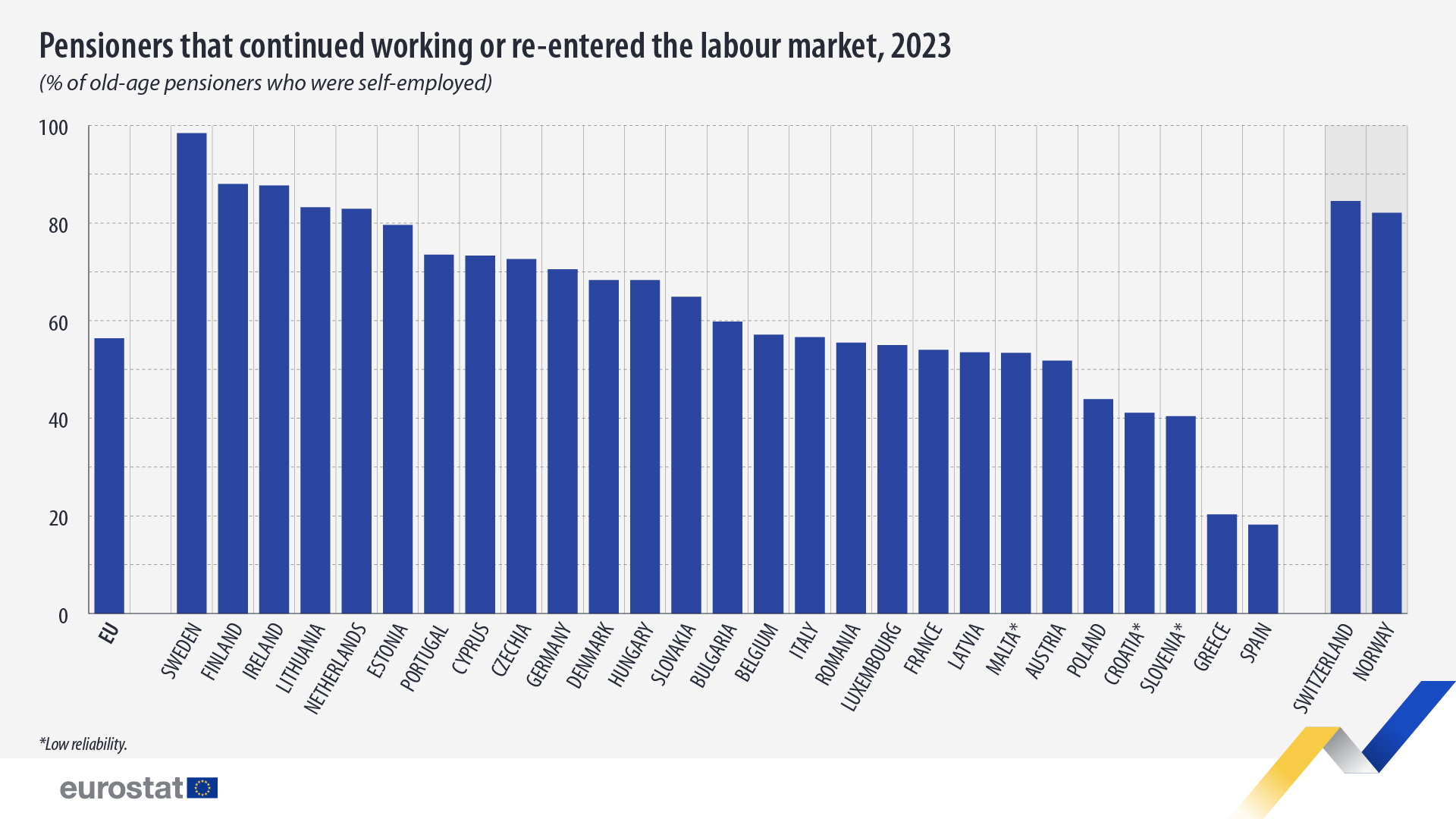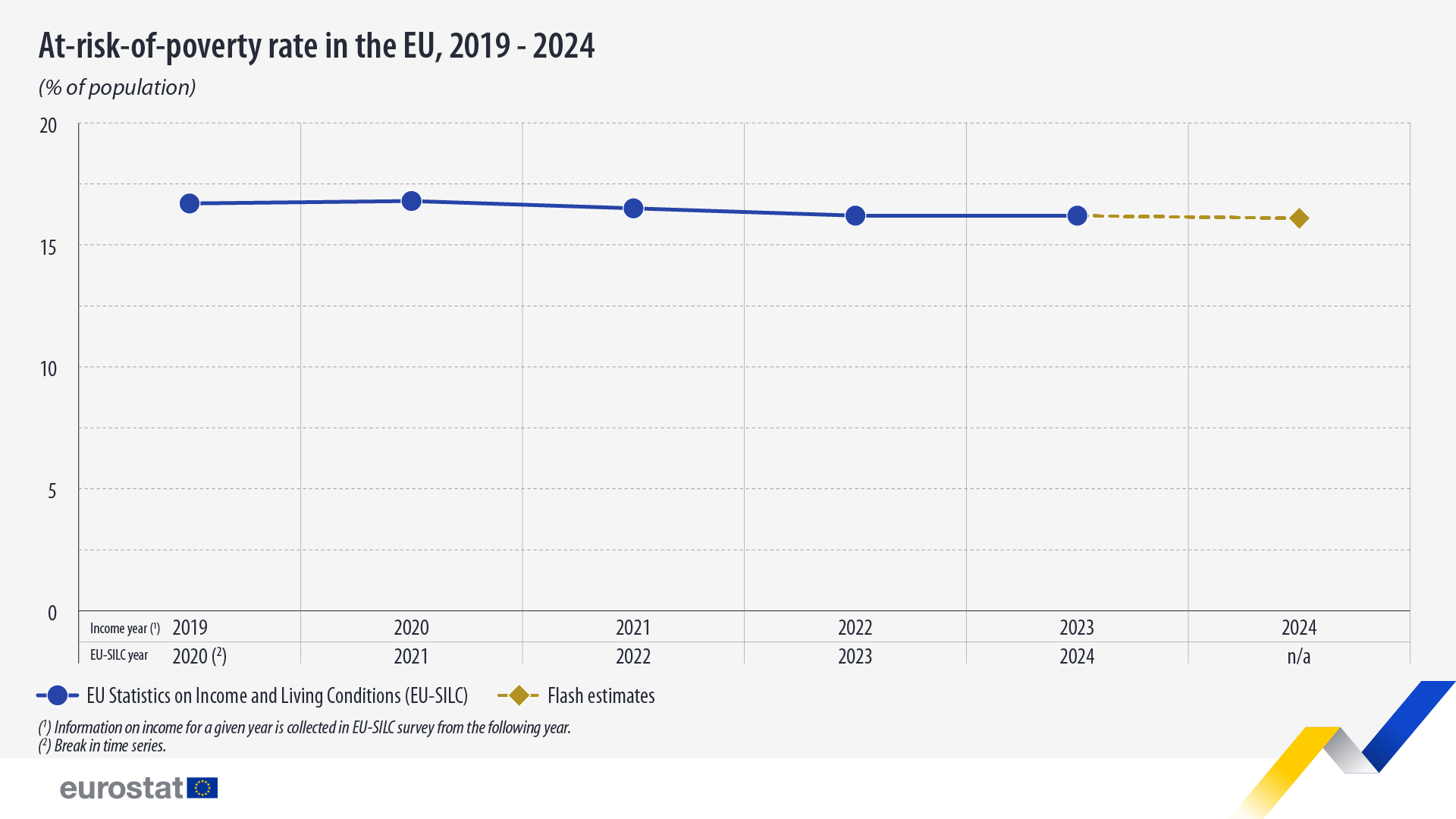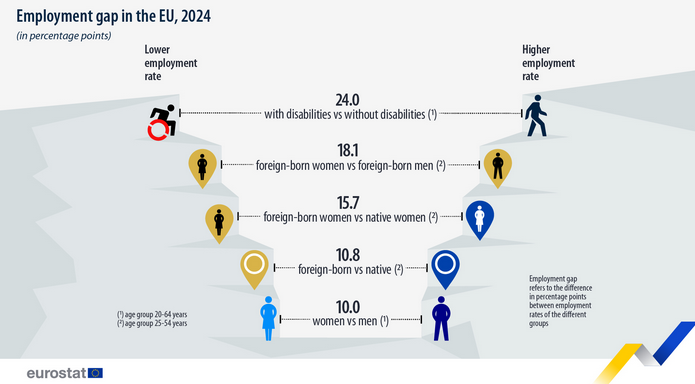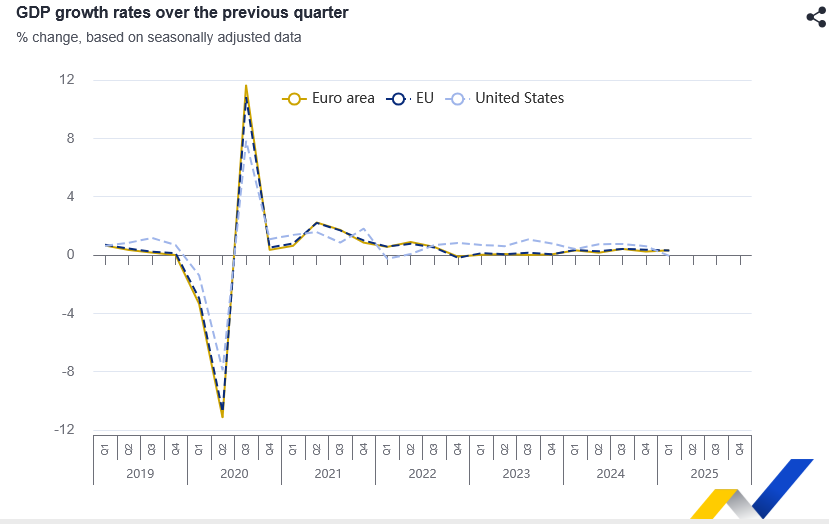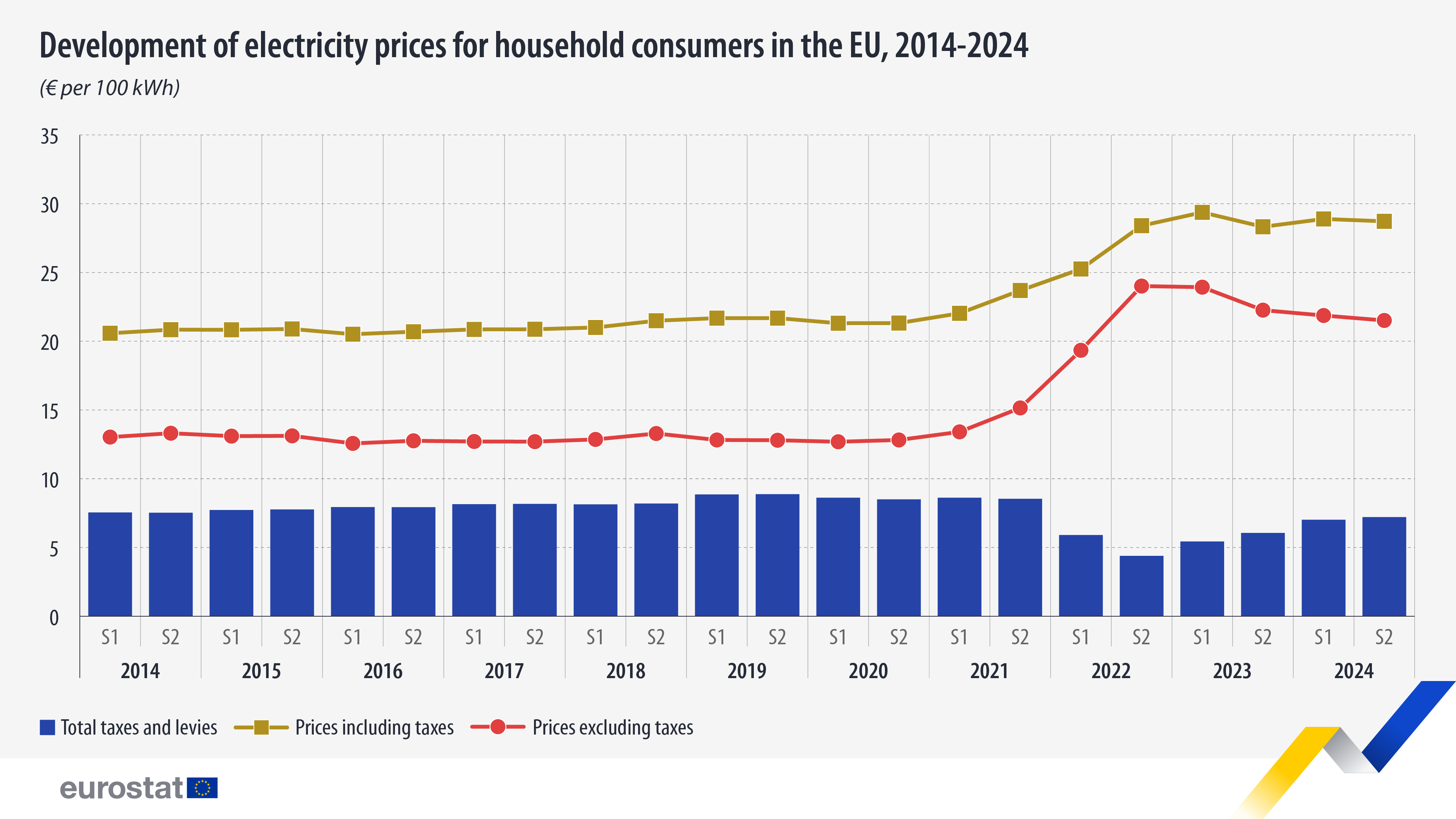In 2024, almost half (49.8%) of households with children in the EU had 1 child, 37.6% had 2 children, and 12.6% had 3 or more children.
Statistics
Data from the labour force survey, collected from old-age pensioners in the EU in 2023, show that 56.4% of self-employed worked after having received their first old-age pension.
According to the EU statistics on income and living conditions (EU-SILC) 2024, based on 2023 income, 16.2% of the EU population was at risk of poverty.
In 2024, employment inequalities linked to disability, gender and origin were recorded in the EU.
In the EU, GDP up by 0.3% and employment up by 0.2%
In the second half of 2024, average electricity prices for households in the EU remained largely stable, with a slight decrease to €28.72 per 100 kWh from €28.89 in the first half of 2024.
In 2024, 75.8% (197.6 million people) of the EU’s 20 to 64-year-olds were employed. The employment rate was up 0.5 percentage points (pp) compared with 2023 and 1.2 pp compared with 2022.
The household saving rate in the euro area was at 15.3% in the fourth quarter of 2024 (same rate as in the third quarter of 2024), which is explained by consumption and gross disposable income incr
In 2024, the EU trade in goods balance registered a surplus of €147 billion, representing a €113 billion increase compared with 2023 (€34 billion).
In 2023, life expectancy at birth in the EU was 81.4 years, marking an increase of 0.8 years from 2022.

